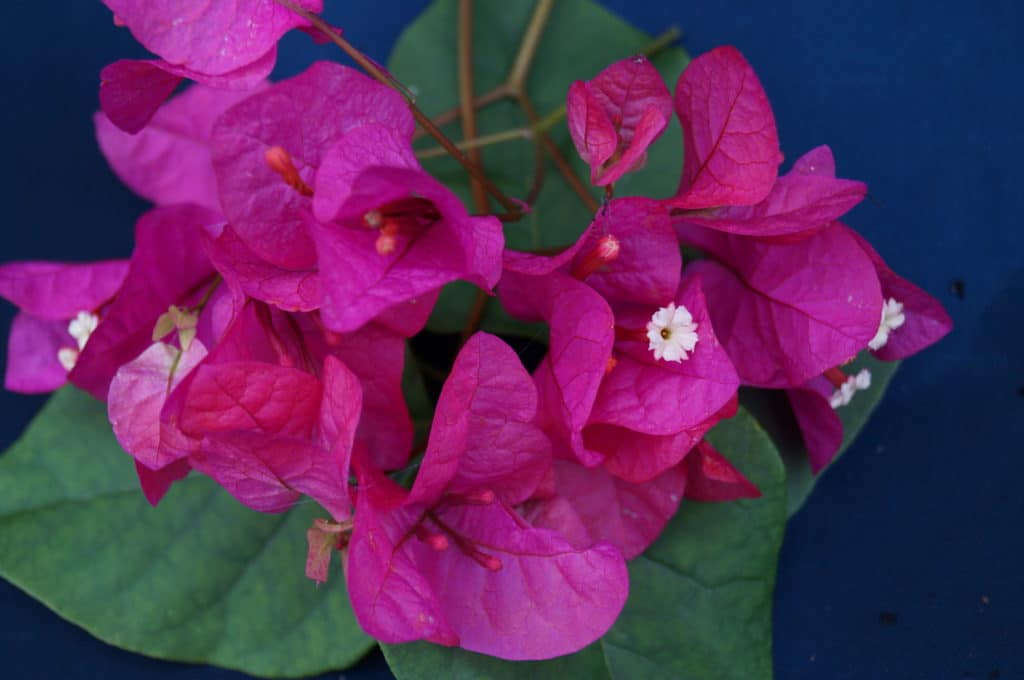
Many plant-lovers believe that Britain is unsuitable for growing bougainvillea because this tropical vine with its characteristic beautiful brachts is known to thrive only in areas where winter temperatures stay above freezing.
Bougainvillea, however, can be grown successfully in containers here in sunny spots in the garden, as long as they are moved indoors before the first frost arrives. Indoors they should be kept in a warm conservatory or greenhouse through the winter months. They are likely to drop their leaves, but this will not impair their recovery and growth when warmer weather returns.
The growing season for bougainvillea begins in early April, and once they are growing strongly they will need regular watering and feeding through the summer.
These pretty plants are heavy feeders, requiring doses of fertilizer throughout the growing season, until late September when the last flowering cycle is over. If you use a water-soluble fertilizer, mix it to half strength and feed the plant every week or two. Alternatively you can apply a slow-release fertilizer at the start of spring and again at midsummer.
Caring for your bougainvillea correctly is essential if you want to make the most of the beautiful blooms for which this plant is loved and famed. Bougainvillea should be pruned after each blooming flush, because the plant blooms on new wood. They are vigorous growers, so pruning after each flowering cycle (which is roughly every two months) does no harm. In fact, if your bougainvillea is in a pot pruning will help to keep it in shape as well as keep it blooming with a riot of gorgeous colour.
During the growing season bougainvillea require regular watering, although the plant will not be happy if its roots are left languishing in mud for most of the time. Allow the soil to dry out somewhat between waterings, but don’t let it dry out completely. Once the growing season is over and you stop feeding, also reduce the frequency of watering. From November onwards you need water your bougainvillea just occasionally, but make sure it has a good soaking and is allowed to dry out inbetween.
Bougainvillea are quite tough plants, but they are fussy about their roots. They prefer not to have their roots disturbed, so refrain from re-potting unless you consider it absolutely vital.
Bougainvillea are generally disease free and not prey to pest infestation. However they are occasionally attacked by whitefly, mealybug, aphid and red spider mite. In the event of this happening to your bougainvillea treat with commercially available preparations from your garden centre.
If the plant drops its flowers during the blooming season, or fails to flower, make sure it is getting enough light and is not being over- or under-watered.
Bougainvillea are relatively easy to care for, and bring much joy in the form of their bright and beautiful flowers when their exotic vibrant colours brighten our summer gardens.
